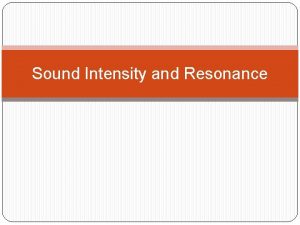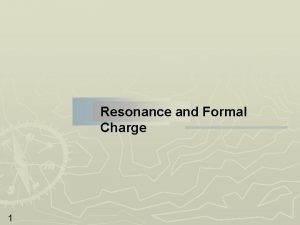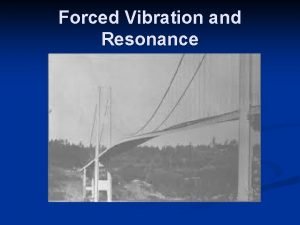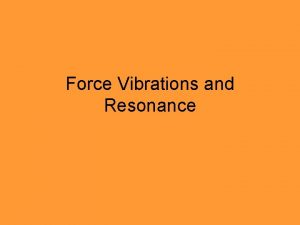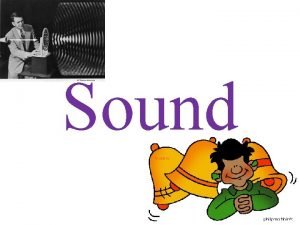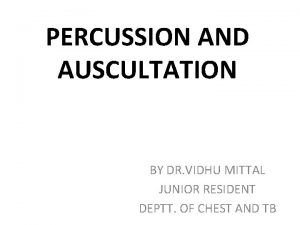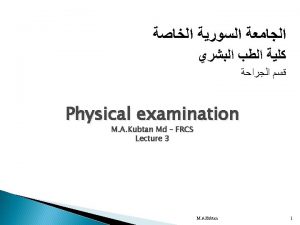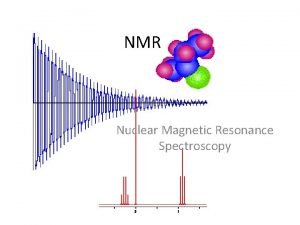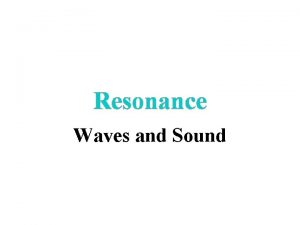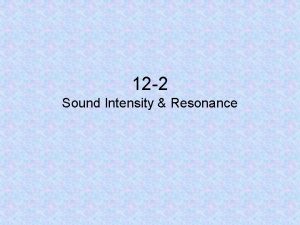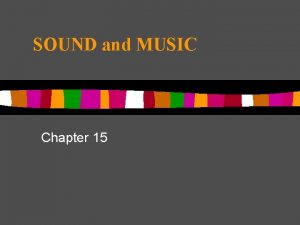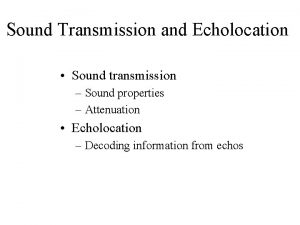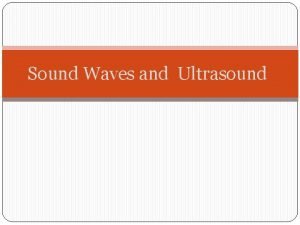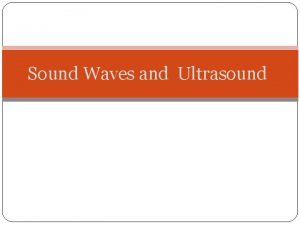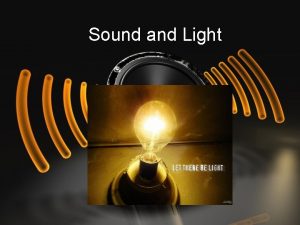Resonance and Sound Decay A Quantitative Study of
























- Slides: 24

Resonance and Sound Decay: A Quantitative Study of Acoustic guitars Acoustical Society of America Meeting October 3, 2005 by Erika Galazen and Joni Nordberg Advisor: Professor Tom Huber Department of Physics, Gustavus Adolphus College, St. Peter MN

Introduction • Musical instruments to date have been perfected almost entirely through trial and error • Many properties of musical instruments have yet to be quantified

Objectives • Study the physical properties of acoustic guitars • Determine and compare the decay constants for the body of the guitar, the string, and the sound at resonant and non-resonant frequencies • Compare the decay constants for different types of guitars in order to gain insight into what makes a guitar good or bad. • We studied three guitars: a “Little” guitar, a classical guitar, and an acoustic guitar

Observed Beat Pattern • When studying the decay of notes using a microphone, we saw some cases where there was some sort of beat pattern that was visible in the microphone amplitudes • It was even possible to hear the beats on a very inexpensive “little” guitar we studied. • These beats are not desirable for production of quality sound

Observed Beat Pattern

Non-Uniformity of Sound Decay • Instead of a uniform exponential sound decay, the sound envelope shows a beat structure • May be due to exchange of energy to different parts of the coupled vibrating system • Energy exchanged between vibrations of the string (which produce relatively little sound) and vibrations of the body of the guitar (which produces more sound) • Similar to Wilberforce pendulum or other coupled oscillators

Hypothesis • Beat patterns are related to the exchange of energy between the strings and the body of the guitar. • To test our hypothesis we simultaneously measured the vibration of the body and the strings as well as the decay of the sound coming from the guitar for different notes on the guitar, seeing as this trend only appears for some notes that we suspected was due to the resonant frequencies of the guitar’s body

Experimental Setup • Laser vibrometer detected the vibrations of the body of the guitar • Pick-up detected vibrations of string • Microphone detected the sound

Finding Resonant Frequencies • Vibrate guitar body with a mechanical shaker over a range of frequencies • Focus laser vibrometer to detect vibrations • Use signal analyzer to view the frequency spectrum

Comparison of frequency spectrum for different guitars

Comparison of frequency spectrum for different guitars • All Guitars exhibit some similar resonant frequencies • The “Little” guitar shows wider resonant frequency peaks • This could be responsible for the prominent beat structure

Data acquisition and Techniques • Tune Guitar to desired frequency, and damp other strings for data collection • Capture single note decay • Import data straight to computer through two preamplifiers and from the vibrometer • Created a program to automatically detect peaks in signals

Results obtained for little guitar System of automatically detecting the peaks in the decay of the waveform from microphone located near the guitar

Fitting decay data to exponential • These microphone peaks are from a non-resonant frequency note • Measurement of all peaks shows some non-uniform decay, such as dips at 1. 1 s, 1. 7 s, and 2. 5 s • From decays like this, we were able to verify that the sound decays faster when near a resonant frequency

Preliminary Results • First Two Guitars (“Little” • Most Recent Guitar Studied • Observed much of the same as and Classical) • We were able to observe a with the previous two guitars common Resonant frequency • With more advanced data of the body around a G# acquisition and analysis, we • Resonant frequency note has a were able to look further into shorter sustain than the note the phenomena noticed in the not at a resonant frequency, first two guitars like the energy similar to published studies transfer between the string and the guitar body • Observed non-uniform beat structure on top of the exponential decay of sound

Decay of pickup amplitude of different frequencies • Maybe not so clear of a dependence on frequency • Look at just the transient decay at the beginning

• Clearer view of the frequency dependence on the string vibration decay • Notes closer to the Resonant frequency decay faster

145 Hz • This data is taken at a frequency of 145 Hz (D 3) • Observe the Vibrometer and the pickup are out of phase • There appears to be two different decay rates corresponding to the transient effects and the long term effects

145 Hz • The different decay rates become more apparent when the peaks of the data are plotted • The long term effects were difficult to quantify

200 Hz • This data is taken at the resonant frequency • Can observe the relative phases between the string, body, and sound vibrations

200 Hz • The peaks from the previous data set at the initial attack of the string • Consistently see that the pickup decays away the fastest • At other frequencies, even the decay of the transient data shows dependence on frequencies

Results • The sound of notes played near or at body resonances of the guitar decay faster than those far away from resonances • The “little” guitar had wider resonance peaks, the nicer guitars had narrower resonance peaks • There are two different decay rates pertaining to the transient and steady state decays • There appears to be a phase difference between the vibration of the guitar string and the guitar’s body that we suspect is due to transfer of energy

Future Research Plans • Verify that decay patterns caused by playing a note are a superposition of decays from the string, the body of the guitar and harmonics of the frequency • Accurately view relative amplitudes of vibrations • Study more guitars and additional variables of them in order to be able to draw more conclusions about what factors determine a ‘good’ guitar

Special Thanks • Our Advisor, Dr. Tom Huber • Sigma Xi Foundation • ASA
 How to find the decay factor
How to find the decay factor Sound intensity and resonance
Sound intensity and resonance Beta plus decay
Beta plus decay The higher the amplitude, the _______the sound.
The higher the amplitude, the _______the sound. Quantitative study of reactants and products
Quantitative study of reactants and products “a sound mind is in a sound body”
“a sound mind is in a sound body” Longitudinal study qualitative or quantitative
Longitudinal study qualitative or quantitative Stoichiometry is defined as the quantitative study of
Stoichiometry is defined as the quantitative study of Resonance and formal charge
Resonance and formal charge Forced vibration and resonance
Forced vibration and resonance Closed pipe resonator
Closed pipe resonator Forced vibration and resonance
Forced vibration and resonance Brand judgement meaning
Brand judgement meaning Brand resonance and the brand value chain
Brand resonance and the brand value chain Delocalization and resonance
Delocalization and resonance Phoneme definition
Phoneme definition Study island sound
Study island sound Study jams sound
Study jams sound Vocal resonance
Vocal resonance Where are vesicular sounds heard
Where are vesicular sounds heard Percussion is done by tapping a body part.
Percussion is done by tapping a body part. Chocl lewis dot structure
Chocl lewis dot structure Brand resonance pyramid
Brand resonance pyramid 2 point perspective street
2 point perspective street Gyromagnetic ratio
Gyromagnetic ratio

